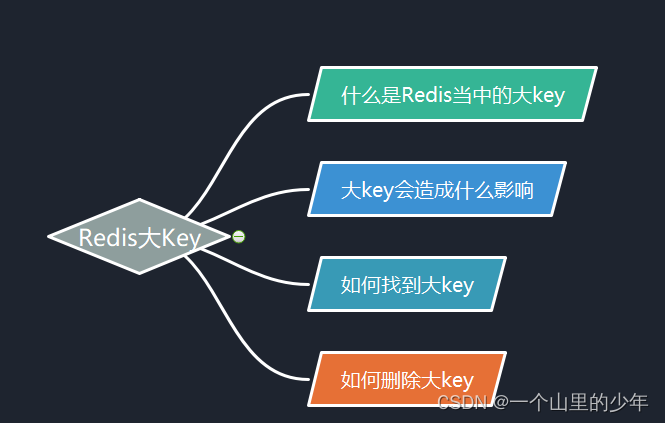Lettuce 是一个高级的、线程安全的 Redis 客户端,用于与 Redis 数据库交互。它提供了许多方法来配置连接池的参数,例如最大连接数、最小空闲连接数、连接超时等。Lettuce 适用于任何需要与 Redis 交互的 Java 项目,它具有简单易用的 API,支持多种数据类型,包括字符串、哈希表、列表、集合和有序集合等。Lettuce 还支持高级功能,如发布/订阅、事务和管道等。
特点
- 线程安全:Lettuce 的 API 是线程安全的,可以在多线程环境下安全使用。
- 支持连接池:Lettuce 提供了连接池的支持,可以有效地管理 Redis 连接,提高连接复用性,减少资源浪费。
- 高级特性支持:Lettuce 支持 Redis 的高级特性,如哨兵模式、集群模式、事务操作等。
- 多种数据类型支持:Lettuce 支持 Redis 的多种数据类型,包括字符串、哈希、列表、集合、有序集合等,方便用户在 Java 项目中操作 Redis 数据。
- 简单易用的 API:Lettuce 提供了简单易用的 API,用户可以轻松地进行 Redis 操作,降低了使用门槛。
- 可扩展性强:Lettuce 的设计具有良好的扩展性,用户可以根据自己的需求进行定制和扩展。
总的来说,Lettuce 是一个功能强大、使用方便的 Redis 客户端,适用于各种规模的 Java 项目。
连接池
连接池特点
Lettuce连接池的特点主要包括:
- 连接池配置简单:Lettuce的连接池配置相对简单,需要手动设置最大连接数、最大空闲连接数、连接超时等参数。连接池的管理需要手动实现。
- 丰富的连接池配置选项:Lettuce提供了更丰富的连接池配置选项,包括连接池的行为、拓扑刷新等。它内置了一个高性能的连接池,不需要手动管理连接池。
- 线程安全:Lettuce是线程安全的,满足了多数场景的需求。
- 支持异步操作和响应式编程:Lettuce支持异步操作和响应式编程,使其在异步编程中表现出色。
连接池管理
Lettuce通过连接池的方式来管理Redis连接。当应用程序启动时,Lettuce会初始化一些连接并放入连接池中。当应用程序需要与Redis交互时,它会从连接池中获取一个连接并使用它。当使用完毕后,连接不会被关闭,而是被归还到连接池中,以供其他线程或请求使用。
这种方式的好处在于,它可以有效地复用连接,避免了频繁创建和销毁连接的开销。同时,通过连接池的管理,还可以控制连接的最大数量,防止连接泄露,保护和控制资源的使用。
连接池优势
使用连接池的优点主要包括:
- 资源重用:由于数据库连接得以重用,避免了频繁创建和释放连接引起的大量性能开销。在减少系统消耗的基础上,也增加了系统运行环境的平稳性。
- 更快的系统响应速度:数据库连接池在初始化过程中,往往已经创建了若干数据库连接置于连接池中备用。此时连接的初始化工作均已完成。对于业务请求处理而言,直接利用现有可用连接,避免了数据库连接初始化和释放过程的时间开销,从而减少了系统的响应时间。
- 新的资源分配手段:对于多应用共享同一数据库的系统而言,可在应用层通过数据库连接的配置,使用数据库连接池技术。设置某一应用最大可用数据库连接数,避免某一应用独占所有数据库资源。
- 统一的连接管理,避免数据库连接泄漏:在较为完备的数据库连接池实现中,可根据预先设定的连接占用超时时间,强制收回被超时占用的连接。从而避免了常规数据库连接操作中可能出现的资源泄漏。
使用连接池可以带来很多好处,包括减少系统消耗、增加系统运行环境的平稳性、提高系统响应速度、优化资源分配、统一连接管理、避免资源泄漏等。
连接池配置参数
连接池的配置参数可以根据实际需要进行调整。以下是一些常见的连接池配置参数:
- maxActive:连接池中可同时连接的最大的连接数。
- maxIdle:连接池中最大的空闲的连接数,超过的空闲连接将被释放。
- minIdle:连接池中最小的空闲的连接数,低于这个数量会被创建新的连接。
- initialSize:连接池启动时创建的初始化连接数量。
- maxWait:连接池中连接用完时,新的请求等待时间,毫秒。超过时间会出错误信息。
- removeAbandoned:是否清除已经超过“removeAbandonedTimout”设置的无效连接。
监控
常用监控工具
- Redis Sentinel:Redis Sentinel是Redis的一个组件,它可以自动监控多个Redis实例,并在某个实例发生故障时自动进行故障转移。Redis Sentinel可以检测到Lettuce连接的问题,并通知应用程序进行相应的处理。
- Redis Cluster:Redis Cluster是Redis的一个分布式解决方案,它可以自动进行数据分片和负载均衡。Redis Cluster可以监控Lettuce连接的状态和性能,并提供实时的数据分析和故障转移功能。
- New Relic:New Relic是一个流行的应用程序性能管理(APM)平台,它可以监控各种应用程序和数据库的性能。New Relic可以集成Lettuce连接,并提供实时的性能指标和警报通知。
- Datadog:Datadog是另一个APM平台,它可以监控各种应用程序和云服务的性能。Datadog可以集成Lettuce连接,并提供实时的性能指标和警报通知。
这些工具都可以帮助您监控Lettuce连接的状态和性能,并提供实时的数据分析和故障转移功能。您可以根据自己的需求选择适合自己的工具。
通过JMX监控
通过JMX(Java Management Extensions)监控Lettuce连接池可以获取到一些有用的性能指标和警报。以下是使用JMX监控Lettuce连接池的一些步骤:
- 启用Lettuce的JMX支持:在创建Lettuce连接池时,可以设置一个JMX代理(例如,使用io.lettuce.core.jmx.JmxAgent)来启用JMX支持。连接到JMX代理:可以使用JMX客户端(例如,使用Java的JConsole或VisualVM工具)连接到运行着Lettuce连接池的应用程序的JMX代理。
- 查找Lettuce连接池的MBean:在JMX代理中,可以找到与Lettuce连接池相关的MBean(例如,io.lettuce.core.jmx.JmxPoolMXBean)。通过MBean可以获取连接池的状态和性能指标。
- 查看连接池性能指标:通过JMX客户端查看MBean的属性和方法,可以获取到连接池的许多性能指标,例如连接数、空闲连接数、活动连接数、等待超时等。
- 设置警报通知:可以在JMX客户端设置警报通知,当连接池的性能指标超过预设阈值时触发警报。
需要注意的是,具体的监控方法和步骤可能会因Lettuce版本和应用场景的不同而有所差异。建议参考Lettuce官方文档和相关技术社区的资料,以获取更详细和准确的信息。
通过Prometheus监控
Prometheus是一种监控系统,可以用于收集、存储和分析各种时间序列数据,例如服务器资源使用情况、网络流量、应用程序性能等。Prometheus的强大功能使得它成为了一种流行的监控解决方案,可以在许多场景中使用。
通过Prometheus监控Lettuce连接池可以获取到一些有用的性能指标和警报。以下是使用Prometheus监控Lettuce连接池的一些步骤:
- 安装和配置Prometheus:首先需要在需要监控的系统中安装Prometheus,并配置Prometheus的监听地址和端口号。
- 创建Exporters:在需要监控的系统中创建Exporters,这些Exporters可以将Lettuce连接池的性能指标暴露出来,以便Prometheus抓取。例如,可以使用node-exporter来收集节点上的metrics监控数据,并使用Prometheus提供的exporter-redis来收集Redis实例的监控数据。
- 配置Prometheus抓取器:Prometheus使用抓取器(Scraper)来定时抓取目标(target)的数据。需要在Prometheus的配置文件中添加抓取器的配置,指定需要抓取的目标和抓取时间间隔等信息。
- 创建查询语句:Prometheus提供了一种查询语言(PromQL),可以使用它来查询和分析抓取到的数据。例如,可以使用PromQL查询Lettuce连接池的连接数、空闲连接数、活动连接数等指标。
- 创建警报规则:Prometheus提供了警报功能,可以根据查询结果创建警报规则,当指标超过预设阈值时触发警报通知。
- 查看图表:最后,可以使用Prometheus提供的Web界面查看抓取到的数据和生成的图表,以及接收警报通知。
需要注意的是,具体的监控方法和步骤可能会因Lettuce版本和应用场景的不同而有所差异。建议参考Prometheus官方文档和相关技术社区的资料,以获取更详细和准确的信息。
代码示例
以下是使用Lettuce连接Redis的示例代码:
|
1 2 3 4 5 6 7 8 9 10 11 12 13 14 15 16 17 18 19 20 21 22 23 24 |
// 引入相关依赖 import io.lettuce.core.RedisClient; import io.lettuce.core.api.StatefulRedisConnection; import io.lettuce.core.api.sync.RedisCommands; import io.lettuce.core.api.sync.RedisCommandsFactory; import io.lettuce.core.api.sync.RedisServerCommands; import io.lettuce.core.api.sync.RedisStringCommands; import io.lettuce.core.cluster.RedisCluster; import io.lettuce.core.cluster.api.StatefulRedisClusterConnection; import io.lettuce.core.cluster.api.sync.RedisClusterCommands; import io.lettuce.core.cluster.api.sync.RedisClusterStringCommands; import io.lettuce.core.masterslave.*; import io.lettuce.core.protocol.*; // 创建RedisClient实例 RedisClient redisClient = RedisClientBuilder.create(); // 创建Redis连接 StatefulRedisConnection<String, String> connection = redisClient.connect("redis://@localhost:6379/0"); // 获取Redis命令执行器 RedisCommands<String, String> commands = connection.sync(); // 设置键值对 commands.set("foo", "bar"); // 获取键值对 String value = commands.get("foo"); System.out.println(value); // 输出 "bar" |
在这个示例中,我们首先创建了一个RedisClient实例,然后使用connect()方法创建了一个StatefulRedisConnection实例,并通过调用sync()方法获取了一个RedisCommands实例。我们可以使用这个实例来执行各种Redis命令,例如set和get。最后,我们可以通过调用get()方法获取键值对的值,并打印输出。
拓展
springboot中通过jmx上报到Prometheus代码示例
在Spring Boot中,你可以使用JMX(Java Management Extensions)来收集应用程序的监控数据,并使用Prometheus进行存储和分析。以下是一个示例代码,展示了如何将Spring Boot应用程序的监控数据上报到Prometheus中:
添加依赖
在你的Spring Boot项目的pom.xml文件中添加以下依赖:
|
1 2 3 4 5 6 7 8 9 10 11 12 13 14 15 16 17 18 19 20 21 22 23 24 25 26 27 28 |
<dependencies> <!-- Spring Boot Actuator --> <dependency> <groupId>org.springframework.boot</groupId> <artifactId>spring-boot-starter-actuator</artifactId> </dependency> <!-- Prometheus Java Agent --> <dependency> <groupId>io.prometheus</groupId> <artifactId>simpleclient</artifactId> <version>0.6.0</version> </dependency> <dependency> <groupId>io.prometheus</groupId> <artifactId>simpleclient_httpserver</artifactId> <version>0.6.0</version> </dependency> <dependency> <groupId>io.prometheus</groupId> <artifactId>simpleclient_common</artifactId> <version>0.6.0</version> </dependency> <!-- Spring Boot JMX Exporter --> <dependency> <groupId>org.springframework.boot</groupId> <artifactId>spring-boot-starter-jmx</artifactId> </dependency> </dependencies> |
配置Prometheus Actuator端点
在application.properties或application.yml文件中添加以下配置:
|
1 2 3 |
# 启用Prometheus Actuator端点 management.endpoints.web.exposure.include=* management.endpoint.health.show-details=always |
创建自定义JMX MBean
创建一个Java类,实现自定义的JMX MBean,用于收集和上报监控数据。在这个类中,你可以通过JMX暴露一些有用的监控指标,然后使用Prometheus将这些指标收集起来。以下是一个简单的示例:
|
1 2 3 4 5 6 7 8 9 10 11 12 |
import javax.management.MXBean; import java.util.concurrent.atomic.AtomicLong; @MXBean(false) // 暴露为JMX MBean,false表示不需要注册到MBeanServer中 public class CustomMonitor { private AtomicLong counter = new AtomicLong(); // 示例指标:计数器 public void increment() { // 增加计数器的值 counter.incrementAndGet(); } public long getCounter() { // 获取计数器的值 return counter.get(); } } |


